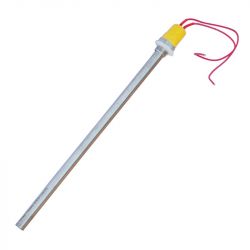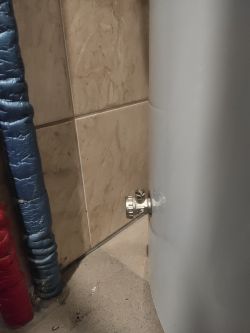I ordered and received the heater, but the tee was removed from the set. The supplier advised me to order it separately.

Czy wolisz polską wersję strony elektroda?
Nie, dziękuję Przekieruj mnie tammarendil wrote:Unfortunately, I do not recommend it, there is an element protruding from the top (perhaps a coil) that makes it impossible to screw in this heater (It draws in one place and does not allow you to screw in the muff) PLN 300 was wasted.
luuk6666 wrote:I don't think you have any choice but to do it yourself
luuk6666 wrote:I plan to screw the heater directly into the tank, i.e. completely get rid of the drain valve.
luuk6666 wrote:in what situations is the water from the tank drained? And if needed, couldn't I just unscrew the heater?
RafalMu wrote:Hello, has anyone tried the said operation for the Vih R 200 tank?
ls_77 wrote:Draining the water by unscrewing the heater is a bad idea - unless you have a drain in the room and you can afford to flood the room.
marekmieszkanie1 wrote:1 Has anyone tried to attach this heater to a 150 L tank? Is there a collision or not?
marendil wrote:Unfortunately, I do not recommend it, there is an element protruding from the top (perhaps a coil) that makes it impossible to screw in this heater (It draws in one place and does not allow you to screw in the muff) PLN 300 was wasted.

civic9 wrote:The hole in the outer casing needed to be corrected
lary79 wrote:
Could you explain what the correction of the hole consisted of?
Have you taken a 1/2" threader and corrected the thread, or how?
Did you screw the heater directly into the hole, or did you use a 1/2" extension and only screwed the heater into the extension?
lary79 wrote:
Yesterday I had a gas boiler inspection, and the professional directed my thoughts to put the heater in the drain hole, and I found this discussion on the forum.
NOTE - he said that you do not need to drain the water from the storage tank. He turned off the two valves on the storage tank, drained the water from the tap in the sink and at that point a vacuum was created from the top of the tank. He turned off the water valve in the sink. Then he unscrewed the water drain at the storage tank (the one from the heater) and maybe 200 ml flew. The vacuum created from the top held the water. I didn't believe it myself, but that's exactly what it did. At this point, without draining the water, you can insert the heater.

